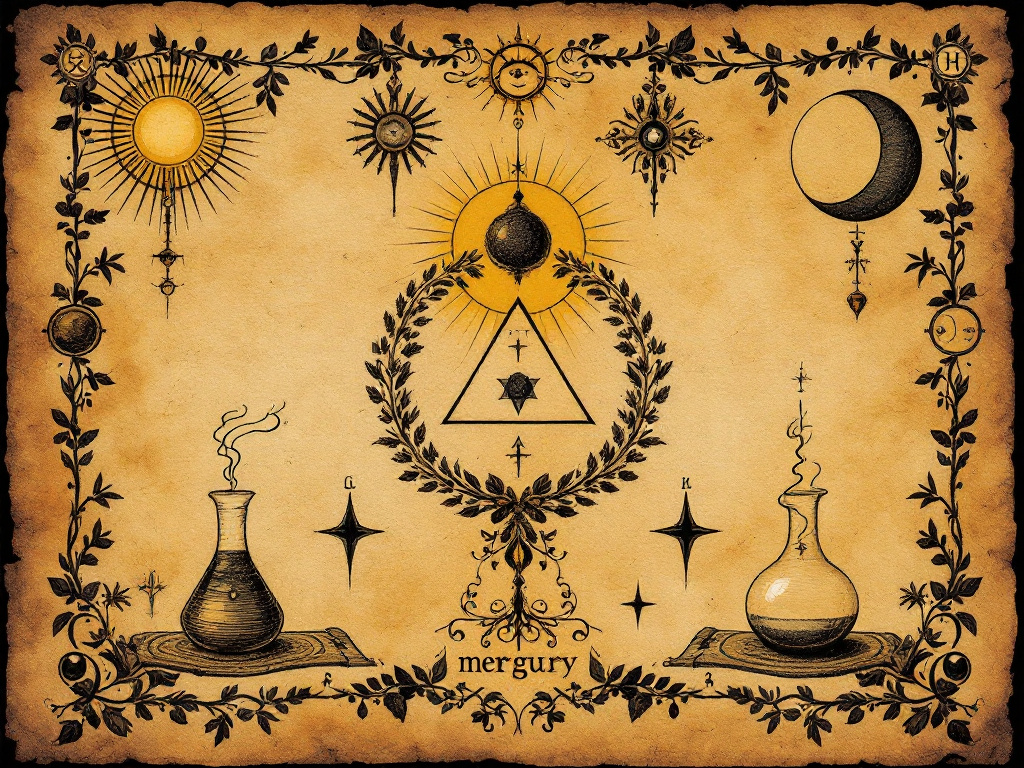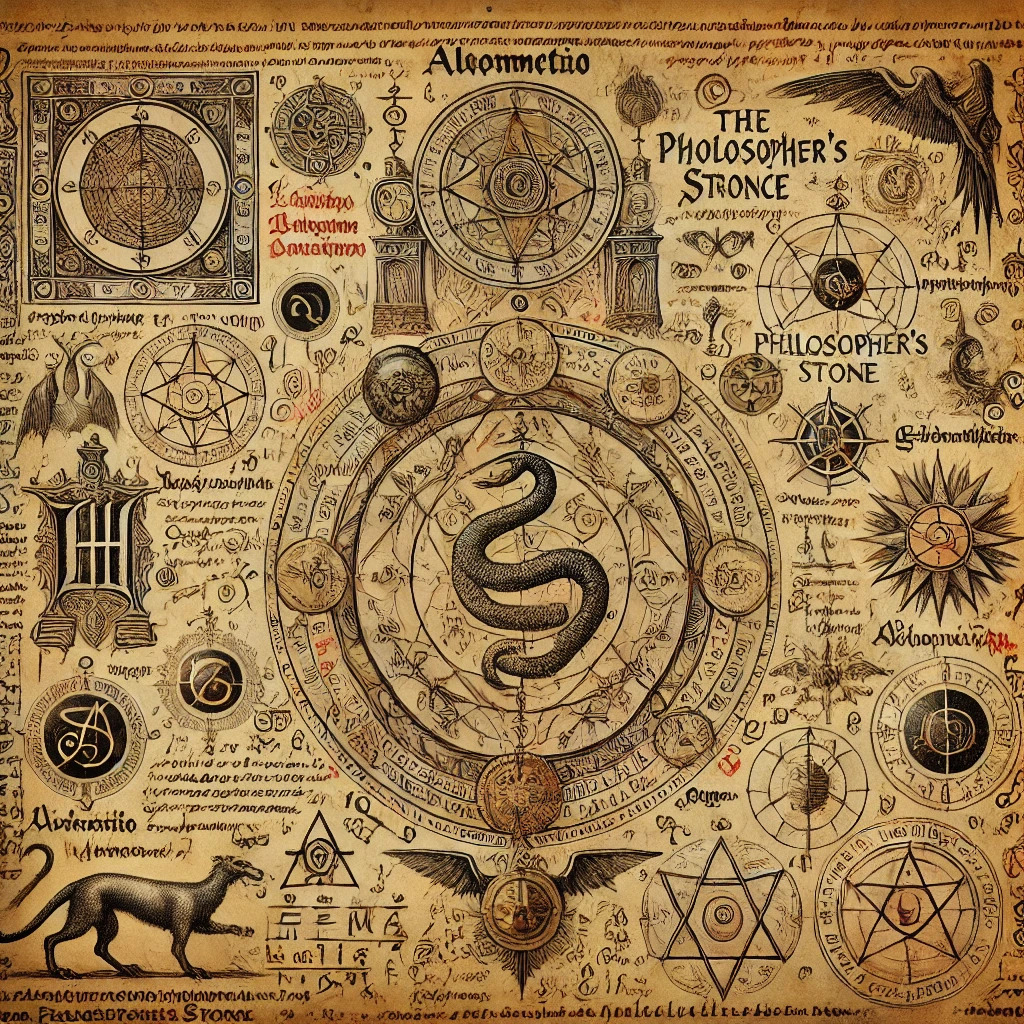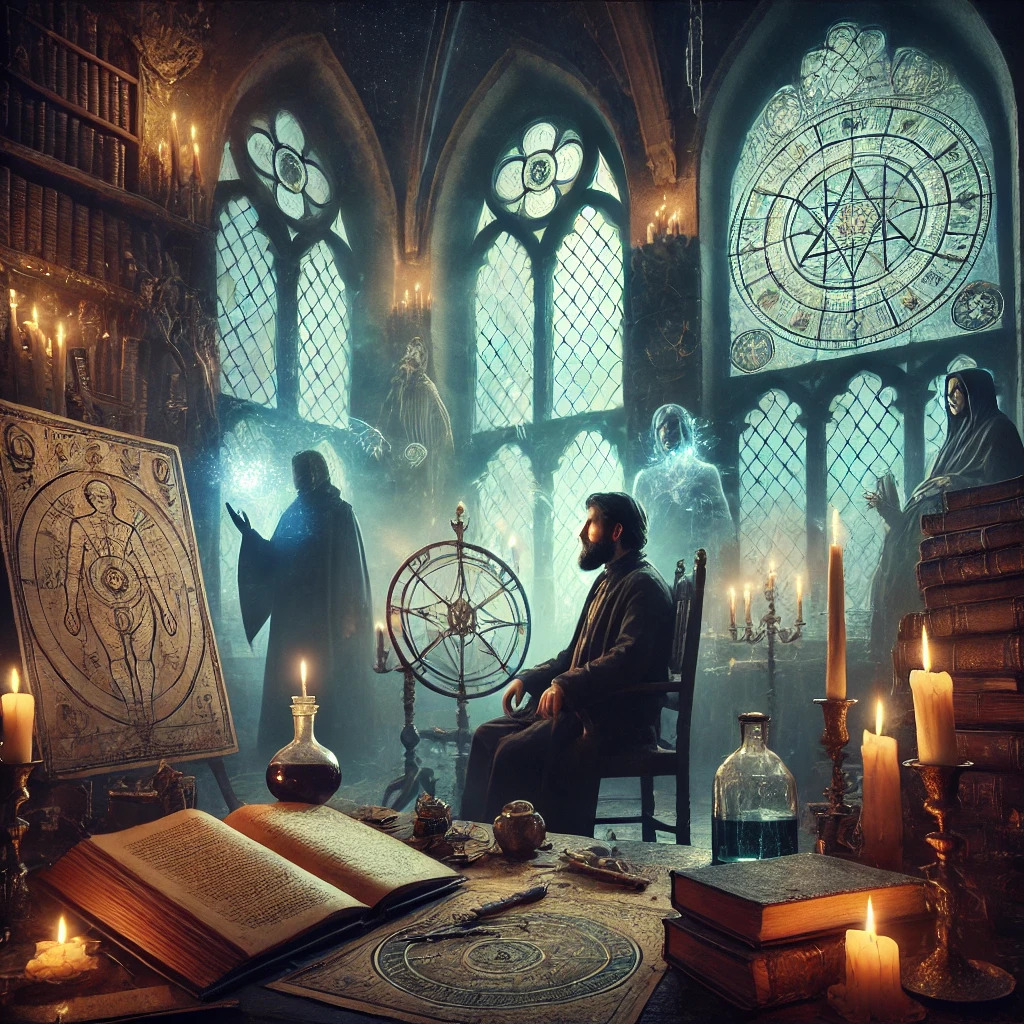The Renaissance, a period of extraordinary cultural and scientific advancement, was also a time of deep fascination with the occult. Alchemy, witchcraft, and esotericism intertwined with humanist thought and new scientific discoveries, creating a complex and intriguing landscape. In this article, we explore the deep roots of these disciplines and the most emblematic figures who shaped this era.
The Origins of Renaissance Occultism
The roots of Renaissance esotericism lie in Antiquity and the Middle Ages. Mystical traditions from ancient Egypt, Neoplatonic speculations, Hermeticism, and Kabbalah profoundly influenced the thinkers of the time. Classical texts, often recovered and translated by Byzantine scholars fleeing to Europe after the fall of Constantinople (1453), fueled the growing interest in magic and the occult.
One of the main reference texts was the "Corpus Hermeticum", attributed to Hermes Trismegistus, a collection of writings blending theology, philosophy, and mystical practices. Alchemy, with its symbolism and the quest for the Philosopher's Stone, became a key discipline, not only as proto-chemistry but also as a spiritual path of inner transformation.

Key Figures in Renaissance Esotericism
During the Renaissance, many intellectuals devoted themselves to the study of occult sciences, combining magic, philosophy, and science. Here are some of the most influential figures:
Marsilio Ficino (1433-1499): A Neoplatonic philosopher, translator of the Corpus Hermeticum, and promoter of a magical-astrological view of the universe. His interpretation of Hermeticism and Kabbalah deeply influenced Renaissance thought.
Giovanni Pico della Mirandola (1463-1494): Author of the famous "Oratio de hominis dignitate", he sought to reconcile Kabbalah with Christian and Neoplatonic philosophy, developing a system of natural magic.
Cornelius Agrippa (1486-1535): Wrote "De Occulta Philosophia", a fundamental treatise on natural magic, Kabbalah, and astrology. His work influenced many later occultists.
Paracelsus (1493-1541): A physician, alchemist, and astrologer, he revolutionized medicine using chemical substances and hermetic remedies, opposing traditional Galenic medicine.
John Dee (1527-1608/9): A mathematician, astrologer, and advisor to Queen Elizabeth I of England. Besides his vast scientific knowledge, he practiced Enochian magic, a system based on angelic communications received through scrying (gazing into mirrors or crystals). Alongside his associate Edward Kelley, he transcribed complex angelic languages, believing them to be messages from higher beings. This system aimed to access divine knowledge and influence earthly affairs.
Giordano Bruno (1548-1600): A philosopher and magician, he developed a Hermetic cosmological vision that combined the infinity of the universe with Kabbalistic and Neoplatonic principles. He was tried and burned at the stake by the Inquisition for heresy.
Alchemical Symbolism and Arcane Formulas
Renaissance alchemy was not just an attempt to transmute base metals into gold, but also a philosophical and spiritual journey. The symbolic language of alchemy was accessible only to initiates and was based on secret knowledge passed down through manuscripts and oral traditions. Some of the most important symbols included:
Sulfur: Symbol of the masculine principle and fire, representing energy and transformation.
Mercury: Associated with the fluid and androgynous principle, linked to the mind and spirit.
Salt: Emblem of stability and crystallization, symbolizing matter and purification.
The four elements (Air, Fire, Water, Earth): Essential to every transformation.
Ouroboros: The serpent biting its own tail, symbol of eternity and the continuous cycle of creation and destruction.
The Athanor: The alchemical furnace, a metaphor for the inner process of purification and transformation.
The Tree of Life: Associated with Kabbalah, representing spiritual ascension and the connection between macrocosm and microcosm.
Alchemical formulas, often written in cryptic language, concealed profound and mysterious knowledge. An example of alchemical transmutation could be:
Formula for the Creation of the Philosopher's Stone:
Sulfur + Mercury → Salt + Air("Sulfur and Mercury combine to generate Salt and Air, the principle of transmutation and purification.")
Or the sequence of the Magnum Opus:
Nigredo → Albedo → Rubedo
("Death and decomposition (nigredo) lead to purification (albedo) and finally to rebirth and enlightenment (rubedo).")

Witchcraft and Persecution
While the Renaissance was an era of great intellectual openness, it also saw an intensification of witchcraft persecutions. The "Malleus Maleficarum" (1487), written by Heinrich Kramer, was one of the most influential manuals for witch-hunting, fueling fear and suspicion towards those practicing occult arts. In many cases, those accused of witchcraft were herbalists, healers, or simple opponents of the patriarchal order.
Notable cases include the trial of Anna Göldi (1782), one of the last European women executed for witchcraft, and the Basque Witch Trials (1609-1614), where hundreds were accused and many executed. In Italy, the Roman Inquisition aggressively pursued alleged witches and heretics, often condemning them to public executions.
Renaissance occultism was a crossroads of science, magic, and philosophy, where extraordinary figures sought to understand the mysteries of the universe through alternative paths to official religion. Although often demonized, these practices deeply influenced modern thought, contributing to the birth of new scientific and philosophical disciplines. The fascination with the dark side of the Renaissance continues to this day, testifying to the eternal bond between knowledge and mystery.








Leave a Comment